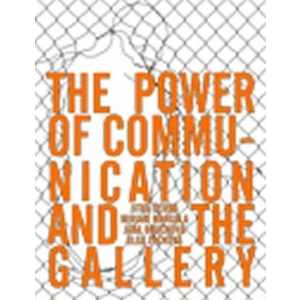Art is communication. It makes thought visible to us. It slows us down. It makes us pause, look, consider, and ask questions. It requires us to be active participants in the reading of the work, asking questions about ourselves, the nature of what it is we’re looking at, and the nature of its relationship to us. It’s informed by real experience and a connectedness to the world, and an ability to bring significance to the particular and the moment. As the critic John Berger observed, “a drawing of a tree shows not a tree, but a tree being-looked-at”. Art has never been interested in imitation of the already known, but aspires to operate in the space between the individual and the perceived reality. It is where, one could argue, the artist’s content is found. Pre-dating written communication
, the visual language of the artist has proven itself inexhaustible over the centuries with its ability to continuously reinvent itself. As each new idea is filtered through the unique sensibilities of the individual, the artist acts as a conduit for a dialogue between sight and touch, logic and intuition, substance and phenomena. Taking risks and reveling in the unknown, art doesn’t come into existence easily and the creative process for the artist is rarely linear. Artists like making things but it’s not a practical endeavor as nothing could be less utilitarian. But it is necessary for the artist and historically, the best work usually reflects this urgency. The gallery plays a valuable role in our relationship with art. It gives us a chance to exist in the same shared space as the work and gain access to it, measuring it against ourselves and providing the type of physical relationship necessary for us to understand the work beyond the mere superficialities of appearance. Just as important, it allows us to understand and appreciate the skill, intelligence, and work necessary for an idea to become a reality, vicariously giving us insight into the creative endeavor. For the artist, gallery exposure has always been important. Exhibiting in a gallery allows the artist to put their art out in the world without apology, and also, without guarantees. Removed from the studio, it tests the work. It is often the first time individual pieces are seen simultaneously as a group by the artist, and the first chance to see if the body of work can be understood as a cogent and cohesive whole. Almost always the culmination of a sustained period of work in the studio, unfairly or not, the response to the artist’s work in a gallery is often looked at as a measure of its worth. It’s not easy nor is it always accurate but it’s understood as a necessary aspect of the business of being an artist. “Seeing is not as easy as it looks”, the artist Ad Reinhardt once quipped, and one could ea
více
Nejlevnější produkt
25,65 € | knihy.abz.cz | In stock
Máte ve vašem obchodě lepší produkt?
Nejlevnější produkt
25,65 € | knihy.abz.cz | In stock
Máte ve vašem obchodě lepší produkt?
K dispozici v
Co říkají obchody
knihy.abz.cz
Kniha: The Power of Communication and The Gallery;

